Plain Bob Doubles
Below we have three videos for you to watch which explain the basics of how to ring Plain Bob, how Bobs work and how to call it. Below that, you will find all the same content as text and pictures… should you need to look with a little more time.
Click the buttons to jump to the static versions of the content…. This is printable or can be viewed when streaming is not an option.
Learning Plain Bob Doubles...
Working with Bobs...
Calling Bob Doubles...
Images and Notes - Learning
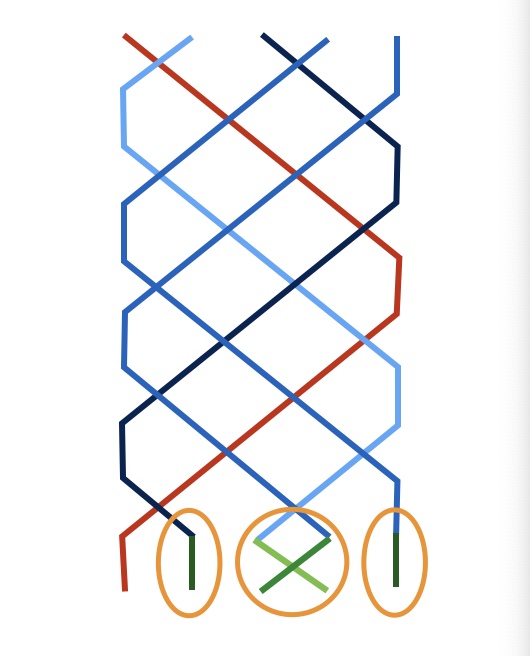
Plain Bob...
…..Almost entirely Plain Hunting.
Exception is the lead end…. 3rds place bell stays in seconds instead of returning to its starting position…
This then causes 2nds place to dodge (reverse direction for 1 change)…
…which in turn causes 5ths place bell to also dodge and finally causes 4ths place bells to stay in fifths.
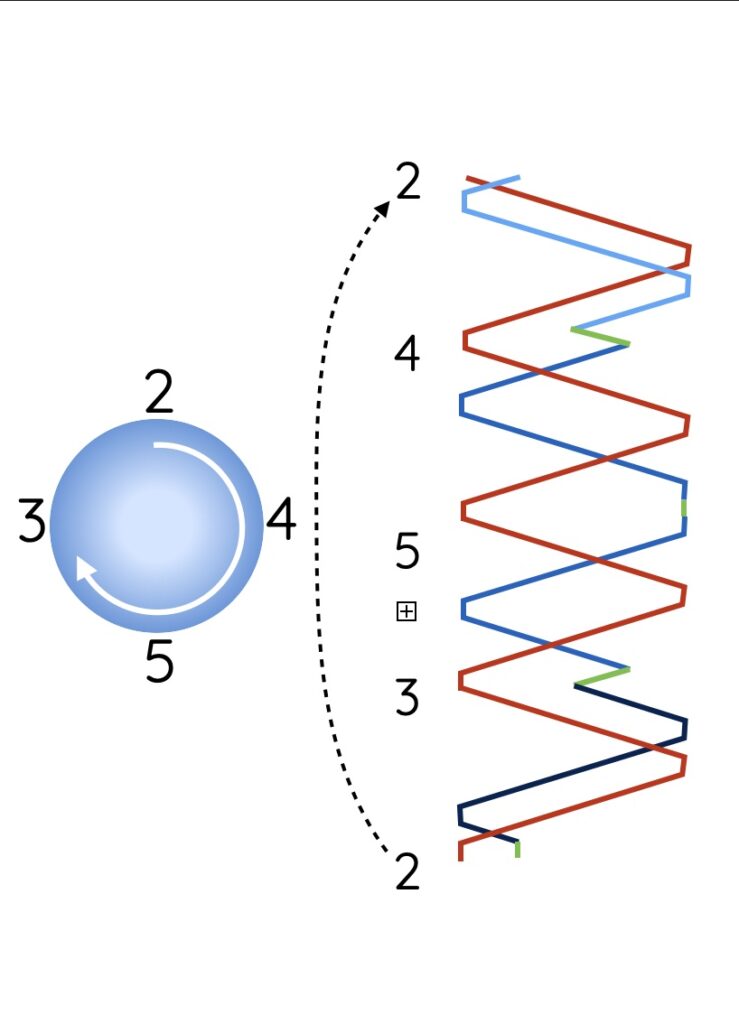
The Line...
If we look at of the place bells in turn, we see that they can all join up….
It extends the course from 10 changes to 40.
Because 2 ends up in fourths place… it can then continue on doing plain hunt from that position.
It behaves like the 4th place bell and then will then end up in fifths and have to stay an extra blow at the lead end… meaning it will then continue as if it were the 5th place bell.
…this leads on to being in 3rds and plain hunting as if the 3rd bell, before finally coming back to its original starting place… 2nds.
It creates circle of work which can then be repeated…
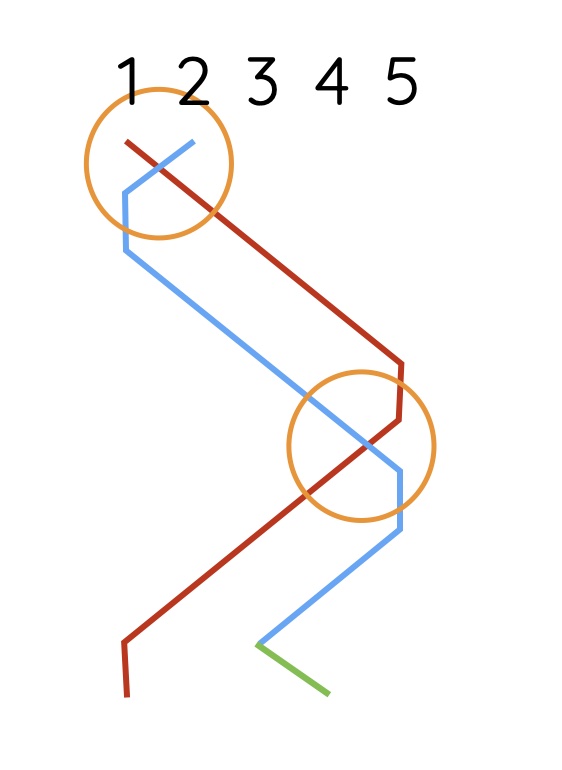
Passing the Treble - 2nd's Place Bell
The treble can be very useful when ringing methods as it continuously ploughs its way back and forth… As a result, it is a constant in a changing world…
If you know plain hunt, you will also know where you are supposed to pass the treble…
2nds place bell will pass the treble last (i.e. just before leading) and will also pass it last going to the back (4-5).
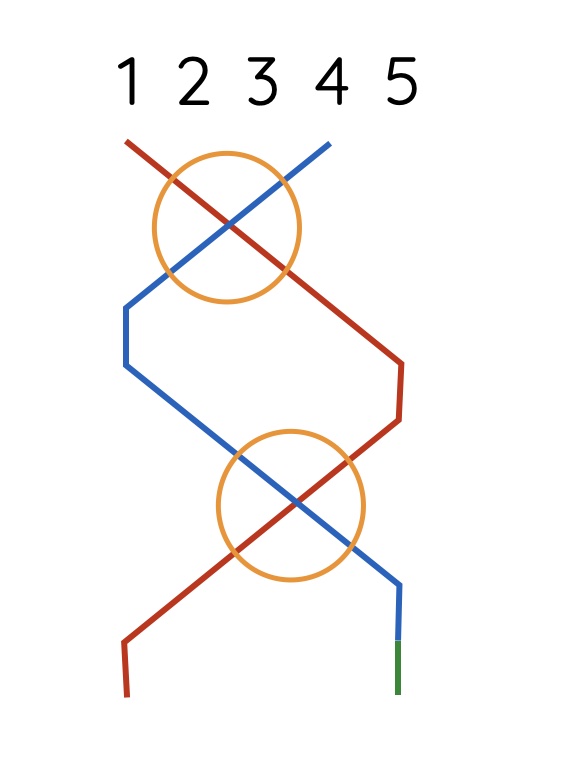
Passing the Treble - 4th's Place Bell
The treble can be very useful when ringing methods as it continuously ploughs its way back and forth… As a result, it is a constant in a changing world…
If you know plain hunt, you will know where you pass the treble…
4ths place bell will pass the treble one place earlier (3-2) and again one before reaching the back (3-4).
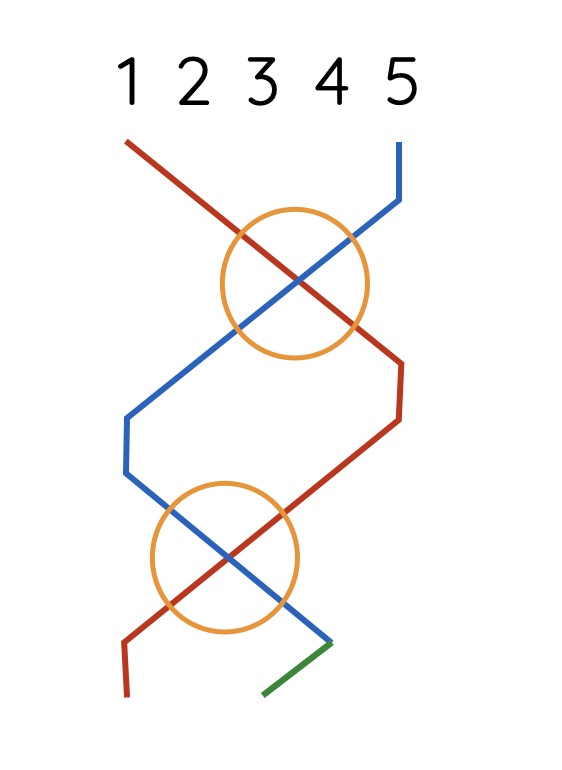
Passing the Treble - 5th's Place Bell
The treble can be very useful when ringing methods as it continuously ploughs its way back and forth… As a result, it is a constant in a changing world…
If you know plain hunt, you will know where you pass the treble…
5ths place bell will pass the treble second on the way down (4-3) and second on the way up (2-3)
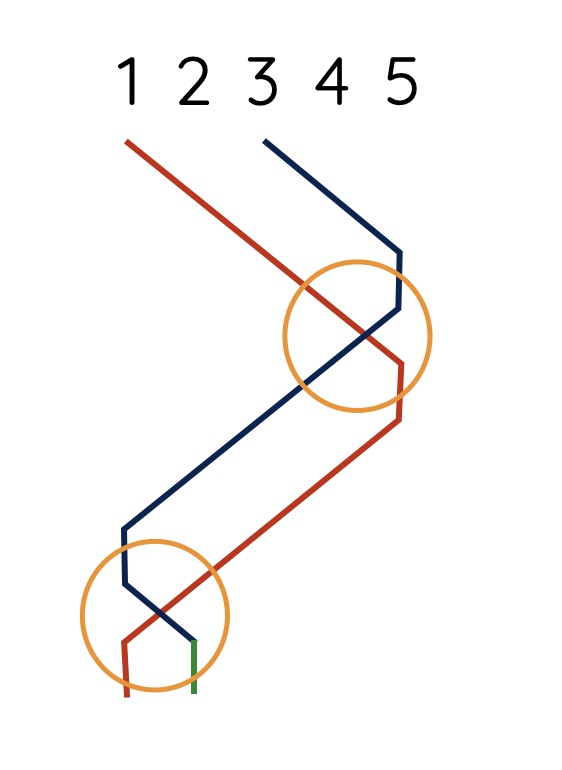
Passing the Treble - 3rd's Place Bell
The treble can be very useful when ringing methods as it continuously ploughs its way back and forth… As a result, it is a constant in a changing world…
If you know plain hunt, you will know where you pass the treble…
3rd will pass the treble first on the way down (5-4) and first on the way up (1-2)
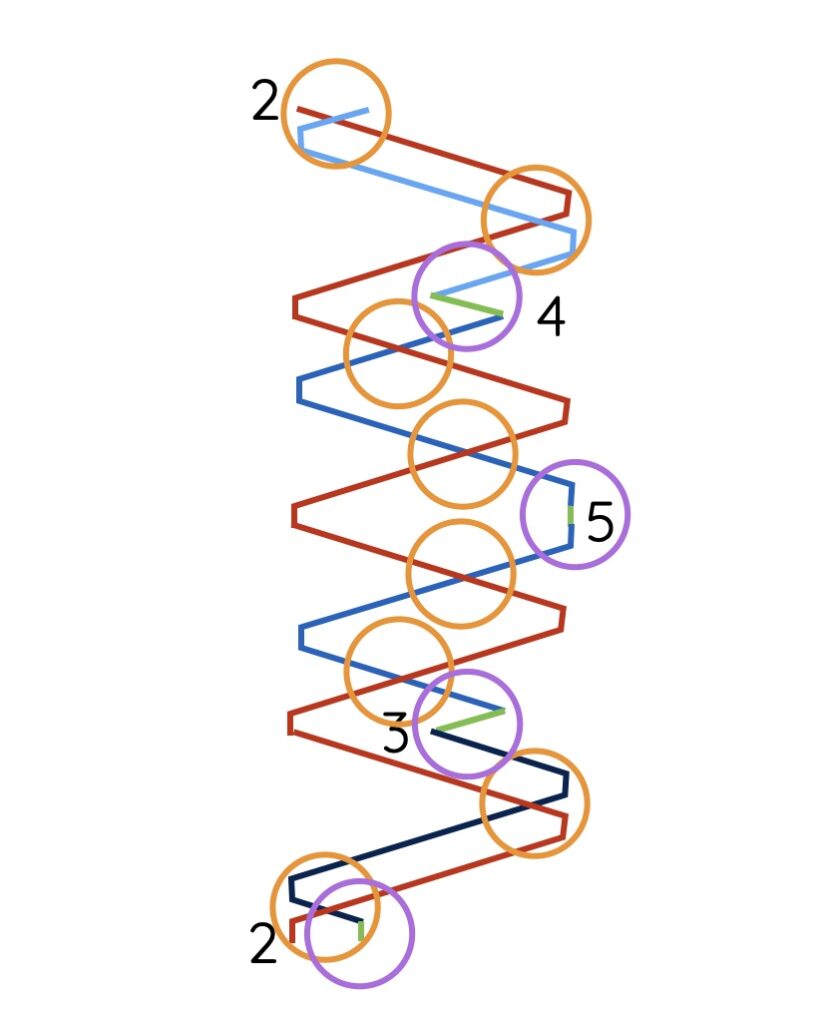
Summary
- Pass the treble – last before you lead
- …..it is also last (4th) as you hunt up.
- Dodge back up into 4ths and become 4th place bell
- Pass the treble one place earlier – so 3rd in the sequence.
- and the 3rd on the way up…
- Stay in 5ths and become 5th place bell
- Pass the treble one place earlier – 2nd on the way down
- …and 2nd after leading
- Dodge back down into 3rds and become 3rd place bell
- Pass the treble one place earlier – 1st on the way down
- Pass the treble 1st after leading.
- Stay in 2nds and become 2nd place bell.
Images and Notes - Bobs
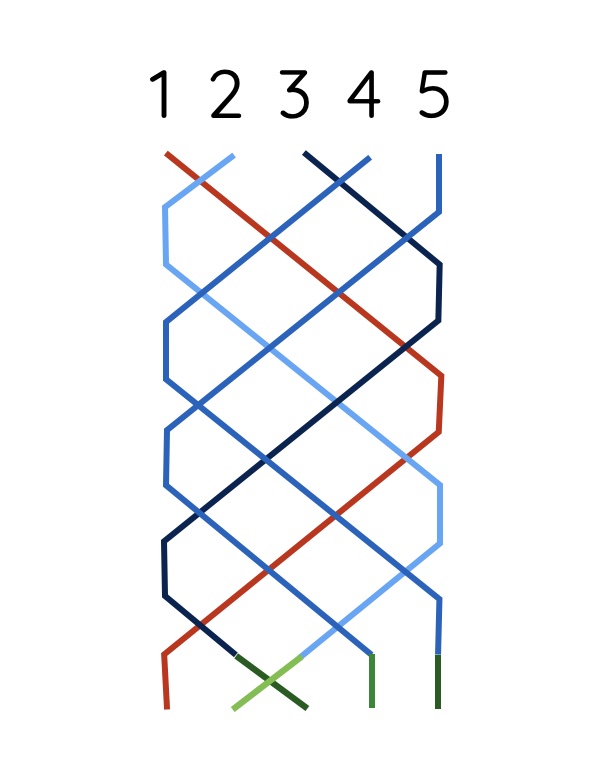
Bobs
A plain course only produces 40 of the possible changes.
Adding Bobs will extend this to the full set of 120 changes.
Bobs are an alternative lead end… so still only affect the very last change in the lead.
The most important bell is 5th place bell – it stays in fourth place instead of dodging. This is called ‘Making the Bob’.
As a result, 2nds place bell and 3rds place bell can continue to plain hunt…
…and fourths place bell will stay in 5th place as before.
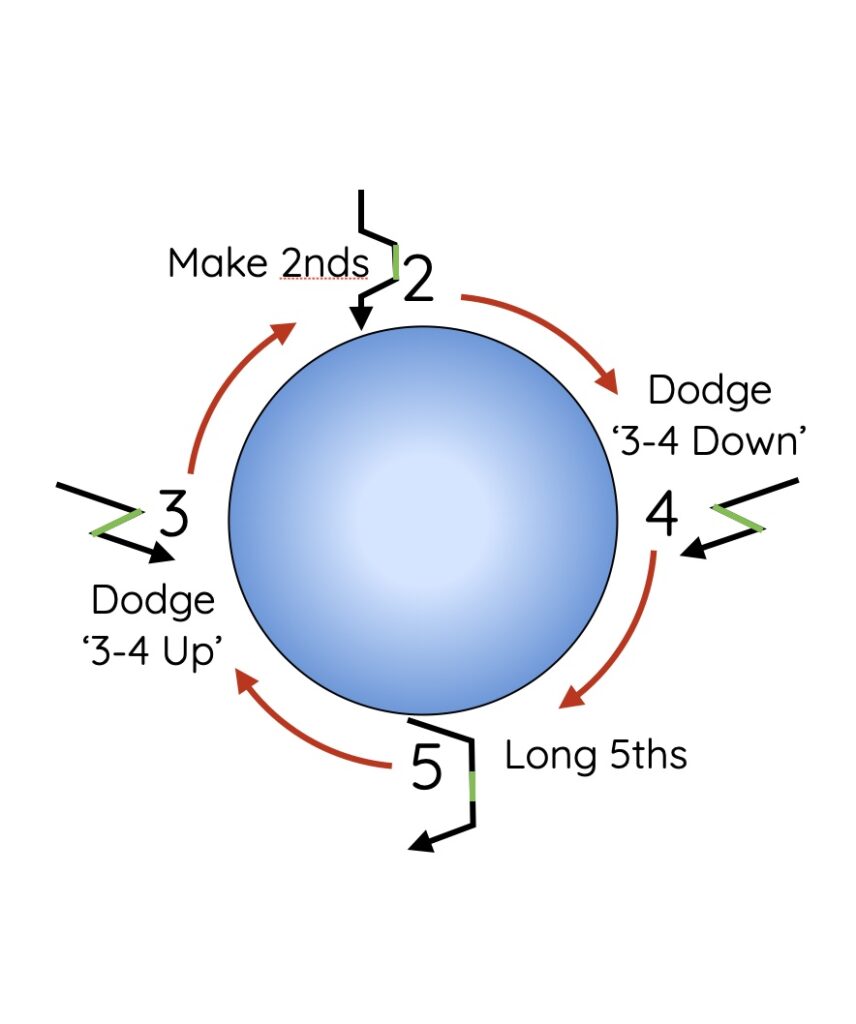
Some Jargon...
At the end of 2nds place bell, we dodge from 3rd to 4th place on the way down to lead…. Hence ‘Dodge 3-4 Down’.
At the end of 4ths place bell, we stay at the back… Hence ‘Long 5ths’.
At the end of 5ths place bell, we dodge from 4th to 3rd place on the way up…. Hence ‘Dodge 3-4 Up’.
At the end of 3rds place bell, we stay in seconds place…. Hence ‘Make 2nds’.
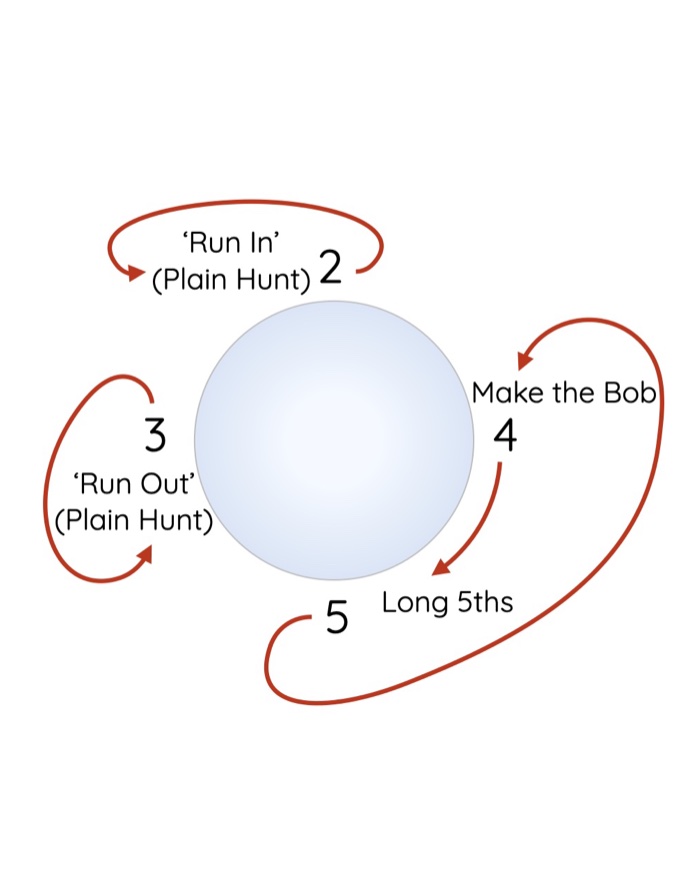
More about Bobs...
The bob does not have a single circle of work…
…it is actually 3 separate loops!
2nds place bell will plain hunt instead of dodging and repeat the entire lead…. Hence ‘Run In’
3rds place bell will also plain hunt and repeat tis entire lead…. hence ‘Run Out’
4th and 5th place bells run a loop, alternating between ‘Long Fifths’ and ‘Making the Bob’
Because of this, Bobs are never consecutive, as this would cause changes to repeat.
Images and Notes -Calling
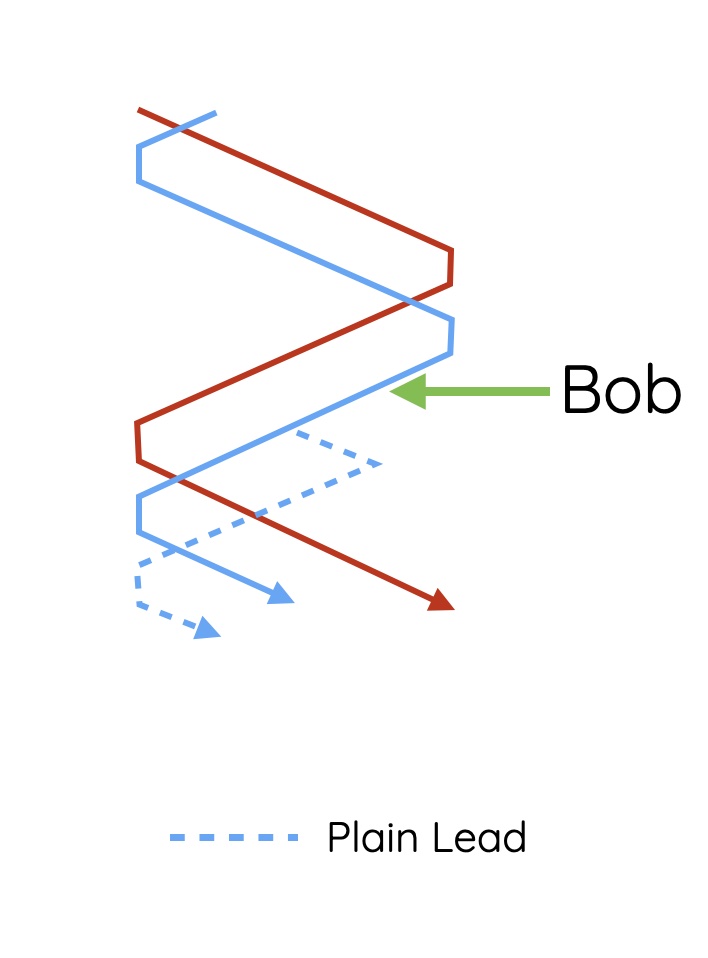
Calling Positions
Bobs are called at the backstroke before the lead end.
When you are 2nds place bell, call the Bob at back stroke in 4ths… then run straight in (plain hunt) to lead.
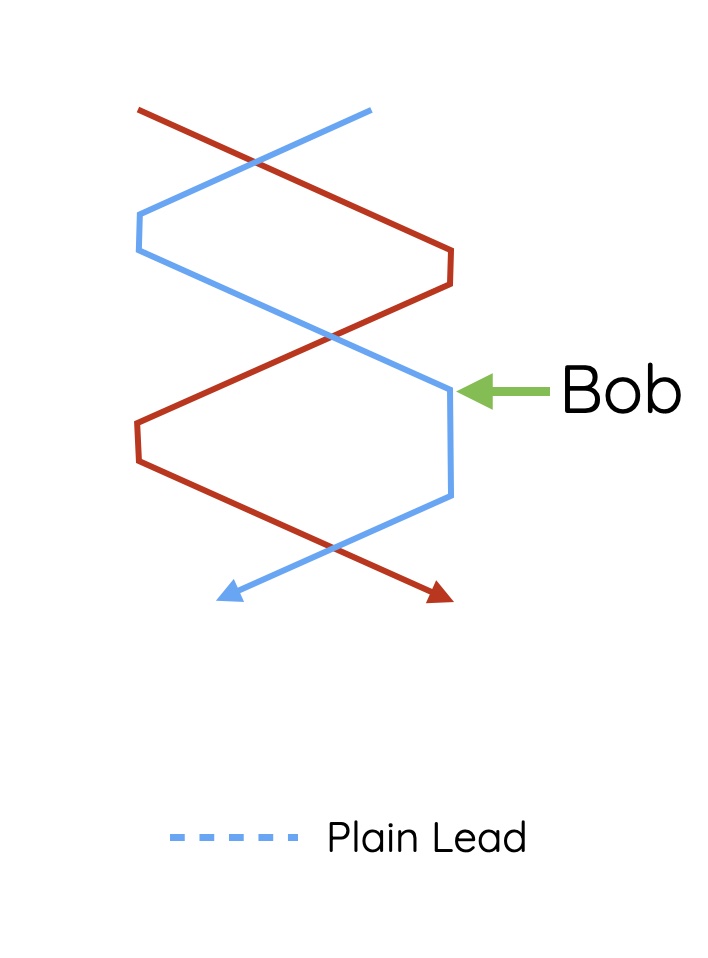
Calling Positions
Bobs are called at the backstroke before the lead end.
When you are 4ths place bell, call the Bob at the first blow in 5ths.
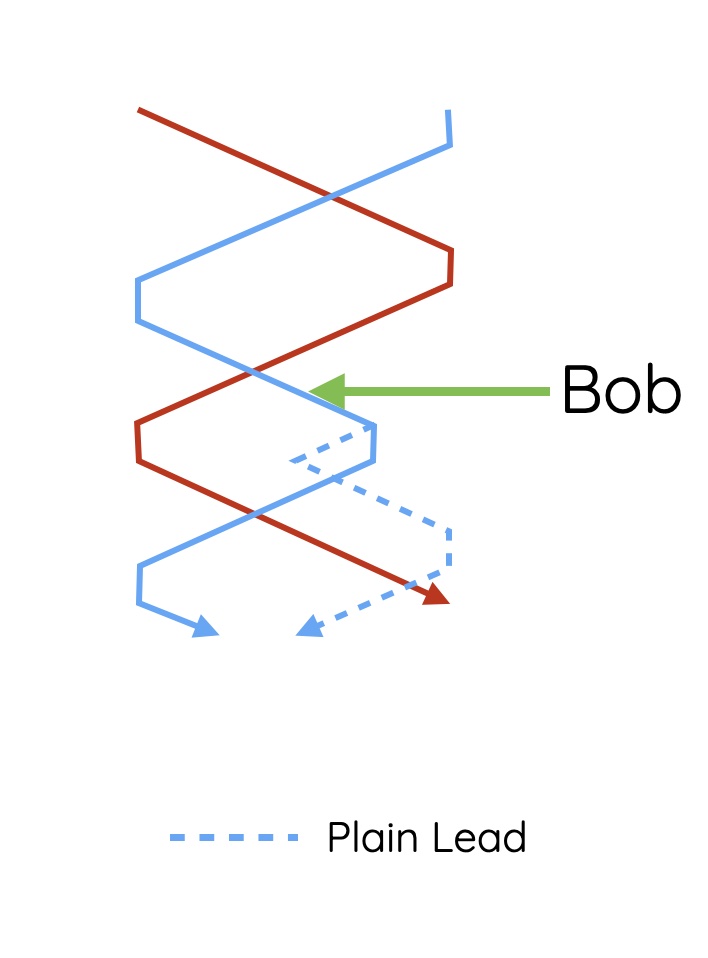
Calling Positions
Bobs are called at the backstroke before the lead end.
When you are 5ths place bell, call the Bob when you pass the treble… then make the Bob.
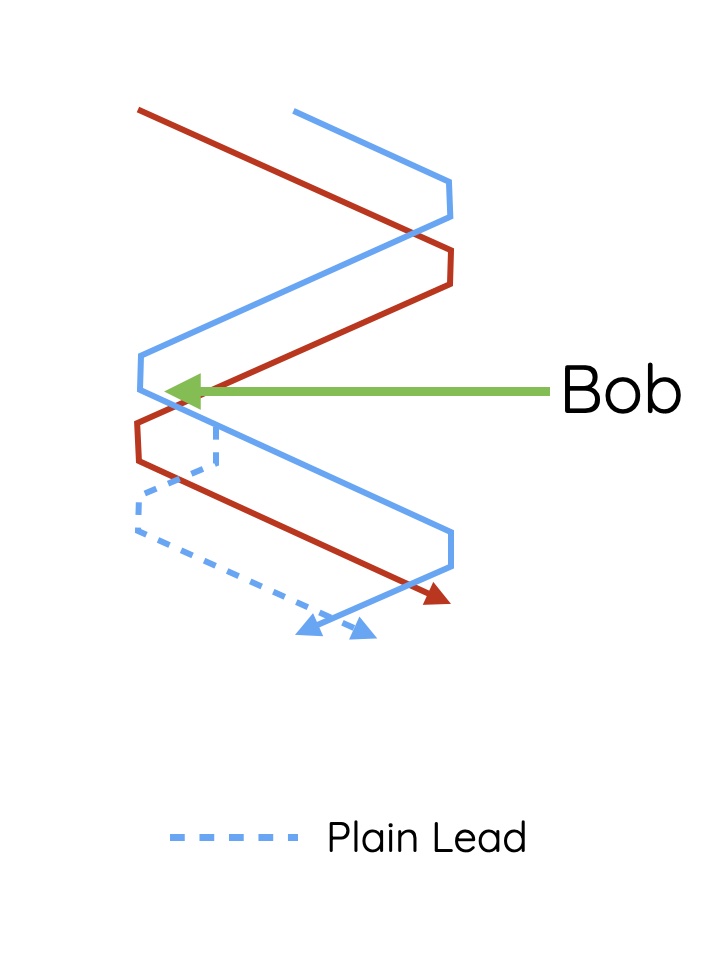
Calling Positions
Bobs are called at the backstroke before the lead end.
When you are 3rds place bell, call the Bob at the backstroke lead and then Run (plain hunt) out.
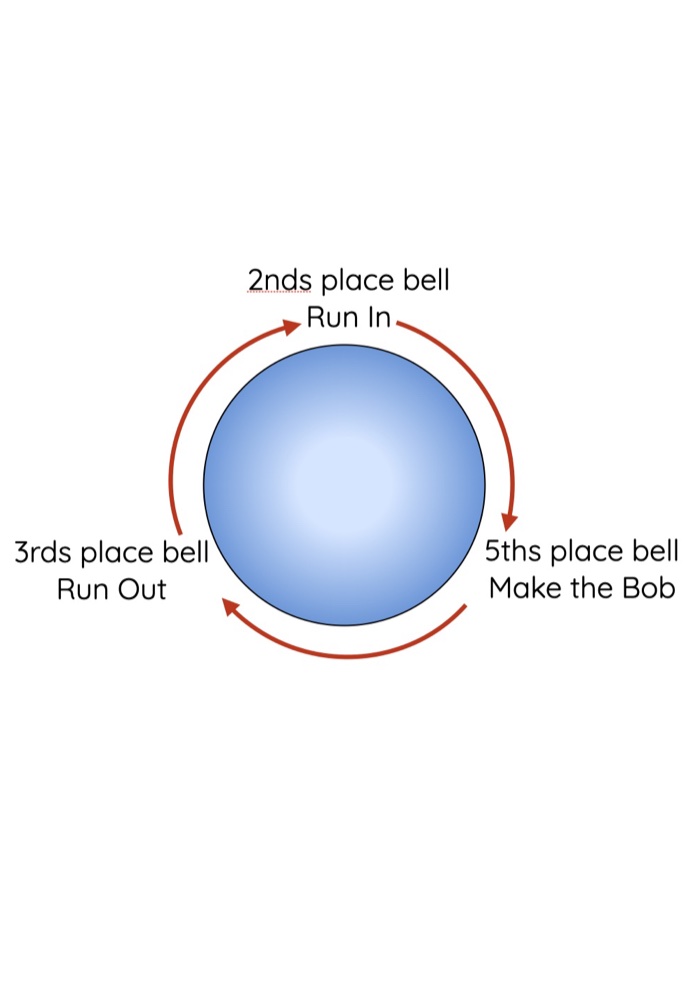
Calling a 120
The easiest touch is call yourself at the end of 4ths place bell (long 5ths) three times. You can do this from any bell.
The alternative is to follow the circle… and call one each of….
Run Out.
Run In.
Make the Bob.
You can start at any point on the circle….
For another view of ringing Bob double, try clicking the link below… they have some useful ideas which will supplement the theory we have look at on this page…
